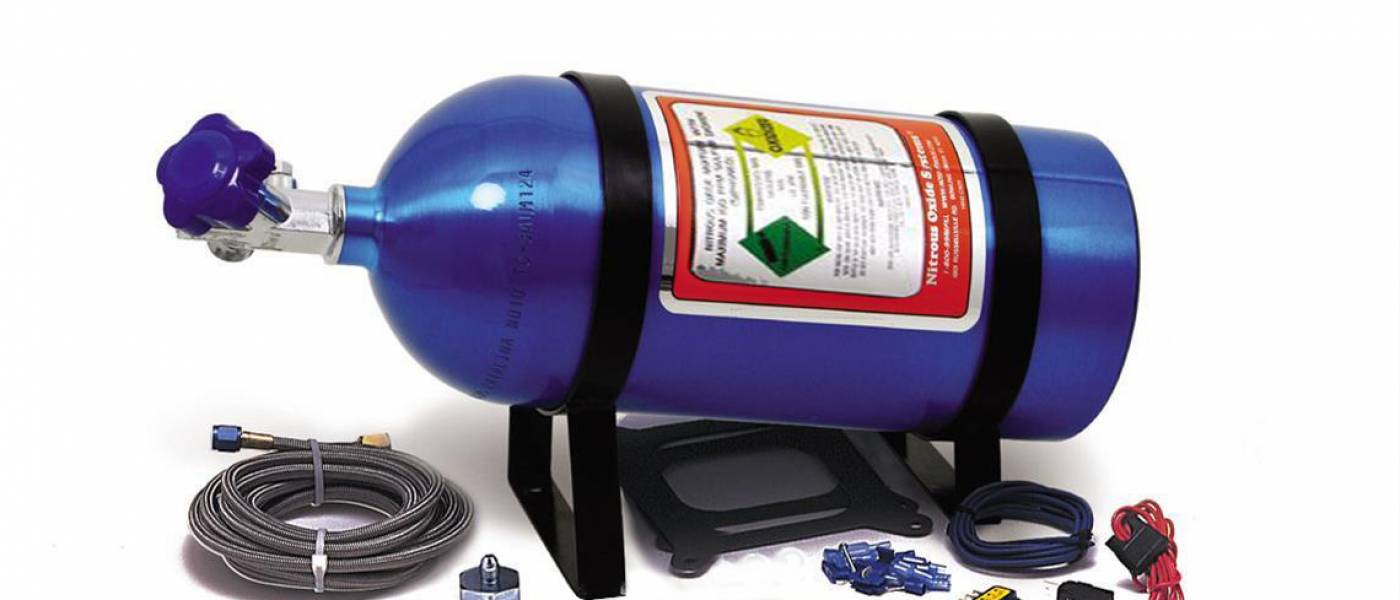Nitrous Oxide & the Diesel
Nitrous oxide has long been a favorite of hot rodders for gasoline engines, but it can work for diesels too.
If you’re a hot rodder, you almost certainly know about nitrous oxide injection and the instant power it can make in a gasoline engine. But just in case you’re not familiar with “squeeze” or “running on the bottle”, here’s a brief overview. Nitrous oxide is a non-flammable compound of nitrogen and oxygen. At room temperature, nitrous oxide is a gas, but it is easily liquefied and stored under pressure. Technically, each molecule of nitrous oxide is comprised of two atoms of nitrogen bonded to one atom of oxygen. At temperatures above 565-575º F., nitrous oxide breaks down into separate nitrogen and oxygen molecules.
Why is the above important? When injected in a vaporous state to the intake air of an internal combustion engine, the resultant heat of compression (on the compression stroke of the engine) breaks down the nitrous oxide compound into inert nitrogen and free oxygen available to support the combustion of extra fuel. This means more fuel can be burned than air alone would support. Burning more fuel releases more heat, which creates more expansion of the working fluid (mostly nitrogen) in the cylinder for more pressure on the piston. The result is more power.
In a gasoline engine, the intake air is proportionally mixed with fuel for an air/fuel ratio of approximately 14.7:1, by weight. The ratio is a little richer for maximum power, and slightly leaner for peak economy. Consequently, if nitrous oxide is introduced into the intake air stream, a proportional amount of fuel must also be added to prevent leaning out the mixture. More fuel and the oxygen to burn it – bingo, more power. How much power can be generated depends on how much nitrous oxide (and extra fuel) is injected, but gains of 50 to 150 horsepower are common. Much higher gains are possible if the engine is built to withstand it.
Purists will hasten to point out that liquid nitrous oxide in its pressurized container will instantly change state to a vapor when it is depressurized into the engine’s intake system, significantly cooling the intake air for increased density, and that equates to more oxygen in the air too. The downside to this relatively simple and inexpensive method of “supercharging” an engine is that nitrous oxide is consumed at a rapid rate in order to make meaningful power increases. Consequently, nitrous oxide is only injected for short spurts at full throttle, usually lasting no more than 10-15 seconds at a time.
Now that we have an overview of nitrous oxide injection on gasoline engines, let’s consider nitrous oxide and the diesel, or more correctly, the turbo-diesel. To begin, a turbo-diesel has no air throttle. It is free to intake as much air as it can draw, or the turbocharger can supply, on every intake stroke. Therefore, hot rodding the diesel is a matter of supplying the engine with as much fuel as can be burned by the air available at maximum power. In fact, you can overfuel a diesel in the quest for power, but that results in excessive exhaust gas temperatures that will kill the turbocharger and the engine. It also results in black smoke from the exhaust (see “Why EGT is Important” elsewhere on this site).
Let’s assume you’ve modified your turbo-diesel to the point that it is overfueled and belching black smoke under a full load. What can you do? One solution is to add nitrous oxide injection, but in this case, you would not add extra fuel because you’re already too rich. Three things happen when you do this. First, the extra oxygen from the nitrous oxide leans out the mixture and the black smoke will be reduced or eliminated. Second, the excess fuel will now be burned for extra power. And third, exhaust temperatures will decline since less afterburning of fuel will occur in the exhaust manifold and the intercooling effect on the intake air will drop the exhaust temperature by a roughly equal amount.
When you think about it, adding nitrous oxide injection to a diesel is easier than adding it to a gas engine because you don’t have to mess with adding extra fuel. In fact, there’s no point in doing it unless you’re already in an overfueled condition.

We’ve probably started something here that will quickly find its way into the pickup pulling power contests. If you’ve been to such a truck pull, you’ve seen the black smoke from overfueling. At Banks, we design our systems to increase engine airflow, and then we add fuel. Of course, if you go even further and intentionally overfuel a Banks power system, injecting some laughing gas just might bail you out before the pistons begin to melt and change holes.

